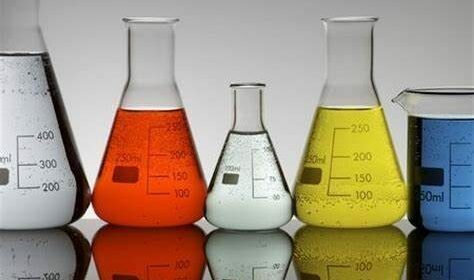Growing Demand for Basic Chemicals Across the Globe is Expected to Boost the Demand for Alkylamines Market During the Forecast Period 2028
Alkylamines Market
Market Synopsis
According to the CRI analysis, the global alkylamines market was valued at around USD 7billion in 2020. It is expected to reach around USD 9million by the end of 2028 at a CAGR of around 5.0%.
Alkylamines are ammonia derivatives with one or more alkyl groups replacing one or more hydrogen atoms. The number of carbon atoms linked directly to the nitrogen atom is used to classify amines. On the nitrogen atom, a primary (1°) amine has one alkyl (or aryl) group, a secondary (2°) amine has two, and a tertiary (3°) amine has three. The alkyl groups are known as substituents, while the parent species is the NH4+ ion.
Growing demand for alkylamines as a raw material in the production of a variety of products—such as solvents, pesticides, feed additives, pharmaceuticals, rubber processing chemicals, and water treatment chemicals—is driving the market forward.The increasing usage of solvents in the manufacturing of spandex, polyurethane elastomers, and polyimide films, on the other hand, are contributing to market expansion.Furthermore, the rising use of C1-C6 alkylamines as pesticides in the agrochemical sector is propelling the market growth. However, the detrimental effects of alkyl amine and high maintenance costs are likely to hinder the global alkylamines market. Nevertheless, factors such as government investments and advancement in manufacturing technologies are likely to create lucrative opportunities for market growth in the forecast period. Surging innovation in the pharmaceutical industry is projected to open up new growth potential for leading market players.Moreover, the growing demand for alkylamines in wastewater treatment is boosting the alkylamines market.
Competitive Landscape
The global alkylamines market is consolidated with numerous global, regional, and local players, with prominent players holding the majority share of the market. Some prominent players includeBASF SE, Alkylamines Chemicals Ltd., Arkema, Dow Inc., Feicheng Acid Chemicals Co. Ltd., Koei Chemical Company, Luxi Chemical Group Co., Ltd., Mitsubishi Gas Chemical Company, Eastman Chemical Co., and Balaji Amines, amongst others. Manufacturers focus mainly on expanding production facilities, acquisition, joint ventures, and partnerships with key stakeholders to gain a competitive advantage over other players.Furthermore, producers are increasingly focusing on a strategic alliance with stakeholders, new product development,and expansion of production capacities to gain a maximum share of the global market.
Segmentation
By Type
-
- This segment is further segmented into methylamines, ethylamines, propylamines, butylamines, cyclohexylamines, and others.
-
- The methylamine segment holds the largest share of the global alkylamines market due to the increased demand from various end-use industries. Itis widely used in various applications, including agricultural chemicals, paint industries, water treatment chemicals, pharmaceuticals, corrosion inhibitors, etc.
-
- Ethylaminehaswitnessed significant growth over the forecast period. It is widely used in various applications, including fuel tanning, synthetic agent, corrosion inhibitor, and deflocculating agent, among others.
-
- Propylaminesare widely used in various applications, including textile resins, pharmaceuticals, pesticides, and other chemicals. This segment is expected to witness the fastest growth during the forecast period.
-
- Butylamines are used as an ingredient in pesticides (such as thiocarbazides), pharmaceuticals, and emulsifiers.
-
- Cyclohexylaminesare used as a corrosion inhibitor for boiler feed water and produce other chemicals and insecticides.
-
- The other segment include alkylamines such as diphenylamine, aziridine, N-methylpiperidine, and N-phenylpiperidine.
By Application
-
- This segment is further segmented into solvents, agrochemicals, rubber processing, water treatment, pharmaceuticals, and others.
-
- The solvent segment held the largest market share of over 30% in the global market. It is widely used in manufacturing versatile solvents such as dimethylacetamide, dimethylformamide, hexamethyl formamide used in acrylic fiber, pharmaceuticals, and other industries.
-
- In agrochemicals,alkylamines like monomethlamine, propylamines, dimethylamines, triethylamine, and cyclohexylamines are used as an ingredient in the production of pesticides, weedicide, herbicide, and insecticides.
-
- In rubber processing, alkylamines are widely used to produce rubber processing chemicals such as stabilizers, antiozonants, accelerators, and preservative agents.
-
- In water treatment, alkylamine is an effective surfactant that can act as biocide due to its ability to kill microorganisms.The use of alkylamines improves the water quality and also acts as resistance to corrosion due to its property of oxygen scavenging.
-
- In water treatment, alkylamines are used in anesthetics, tranquilizers, antihistamines, amoxicillin, ampicillin, antimalarials, and disinfectants, amongst others. This segment is expected to witness significant growth in the coming period.
By Region
-
- North America:Market growth is driven by the large production bases of alkylamines globally and the presence of advanced manufacturing technologies.
-
- Europe: Stringent government regulations, rehabilitation of wastewater treatment plants, and the presence of large-scale end-use industries are driving the region’s market.
-
- Asia-Pacific: This is the largest and fastest-growing regional market owing to the rapid growth of exports, growing water treatment activities and surfactants, and the wide presence of key producers in the region.
-
- Latin America:The growing demand is due to the low manufacturing costs, upsurge in consumers’ purchasing power, and rise in agricultural production, especially in Brazil and Argentina.
-
- Middle East & Africa:High disposable incomes and increased demand from agrochemicals, solvents, and wastewater treatment plants fuel the demand for alkylamines in the region.

